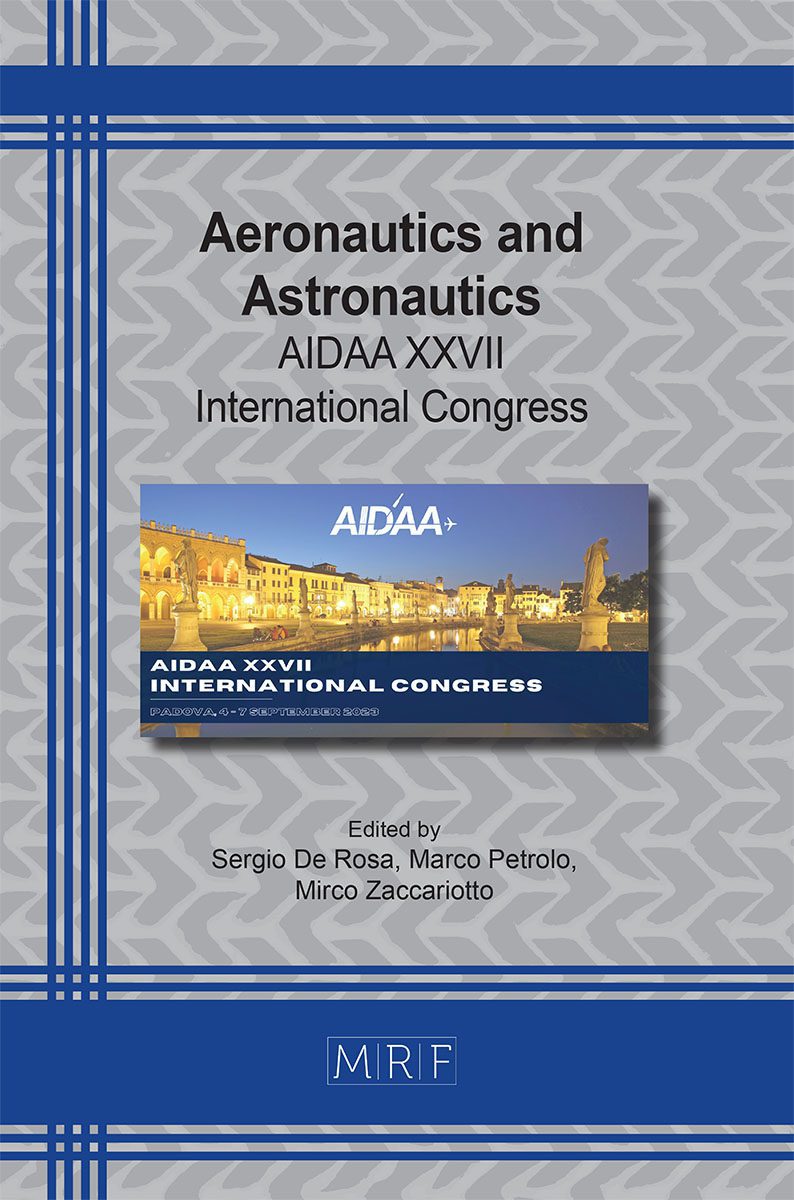Aerodynamic design of advanced rear end for large passenger aircraft
Salvatore Corcione, Vincenzo Cusati, Fabrizio Nicolosi
download PDFAbstract. This paper focuses on the aerodynamic design of an advanced rear end concept for a large passenger aircraft, such as the Airbus A320. The aim was to reduce the size of the horizontal tailplane to minimize the aerodynamic drawbacks related to longitudinal stability and control requirements. This reduction would lead to improved aircraft performance by reducing fuel burn and rear-end weight. Assuming the same position of the aerodynamic center of the horizontal tailplane of a conventional aircraft, the results of this investigation showed that the required stabilizing performance of the tail could be achieved with a smaller tail surface. A reduction of 6% in tail planform area was achieved by leveraging the unique aerodynamic characteristics of a forward-swept tail, combined with the implementation of a leading-edge extension device. The reduced wetted area and the lower weight of the horizontal empennage could result in fuel savings of 100 to 120 kg of fuel per 1,000 km. This is equivalent to approximately 1.0 to 1.2% for the specific aircraft category being considered.
Keywords
Aircraft Design, Forward Swept Tailplane, Leading Edge eXtension, Aerodynamics
Published online 11/1/2023, 5 pages
Copyright © 2023 by the author(s)
Published under license by Materials Research Forum LLC., Millersville PA, USA
Citation: Salvatore Corcione, Vincenzo Cusati, Fabrizio Nicolosi, Aerodynamic design of advanced rear end for large passenger aircraft, Materials Research Proceedings, Vol. 37, pp 435-439, 2023
DOI: https://doi.org/10.21741/9781644902813-96
The article was published as article 96 of the book Aeronautics and Astronautics
![]() Content from this work may be used under the terms of the Creative Commons Attribution 3.0 license. Any further distribution of this work must maintain attribution to the author(s) and the title of the work, journal citation and DOI.
Content from this work may be used under the terms of the Creative Commons Attribution 3.0 license. Any further distribution of this work must maintain attribution to the author(s) and the title of the work, journal citation and DOI.
References
[1] Anderson, J.D., Aircraft Performance and Design, WCB McGraw-Hill, Boston, MA, USA, 1999
[2] Sánchez-Carmona, A. and Cuerno-Rejado, C. and García-Hernández, L., Unconventional tail configurations for transport aircraft, Progress in Flight Physics 9 (2017) 127-148. https://doi.org/10.1051/eucass/2016090127
[3] Sánchez-Carmona, A. and Cuerno-Rejado, C., Vee-tail conceptual design criteria for commercial transport aeroplanes, Chinese Journal of Aeronautics 32 (2019) 595-610. Chinese Journal of Aeronautics. https://doi.org/10.1016/j.cja.2018.06.012
[4] CleanSky, New empennage for aircraft (NEFA), https://cordis.europa.eu/project/id/G4RD-CT-2002-00864
[5] Frota, J. and Nicholls, K. and Müller, M. and Gall, P.E. and Loerke, J. and Macgregor, K. and Schmollgruber, P. and Russell, J. and Hepperle, M. and Dron, S. and Plötner, K. and Gallant, G., Final Activity Report. New Aircraft Concept Research (NACRE), NACRE Consortium: Blagnac, France (2010). https://cordis.europa.eu/project/id/516068/reporting
[6] Llamas Sandin, R.C. and Luque Buzo, M., Aircraft Horizontal Stabilizer Surface, Google Patents (2010) US 2010/0148000 A1. https://patents.google.com/patent/US20100148000A1/en
[7] Seitz, A. and Kruse, M. and Wunderlich, T. and Bold, J. and Heinrich, L., The DLR Project LamAiR: Design of a NLF Forward Swept Wing for Short and Medium Range Transport Application, 29th AIAA Applied Aerodynamics Conference (2012). https://doi.org/10.2514/6.2011-3526
[8] Seitz, A. and Hübner, A. and Risse, K., The DLR TuLam project: design of a short and medium range transport aircraft with forward swept NLF wing, CEAS Aeronautical Journal 11 (2020) 449-459. https://doi.org/10.2514/6.2011-3526
[9] Roskam, J. and Lan, C.T.E., Airplane Aerodynamics and Performance, DARcorporation, Lawrence, Kansas 66044, USA, 1999
[10] Bertin, J.J. and Cummings, R.M., Aerodynamics for Engineers, Pearson Education International, Upper Saddle River, NJ, 2009
[11] AIcraft advanced rear end and eMpennage oPtimisaAtion enhanced by anti-iCe coaTings and devices (IMPACT), GA no. 885052. https://www.impact-cleansky-project.eu/































